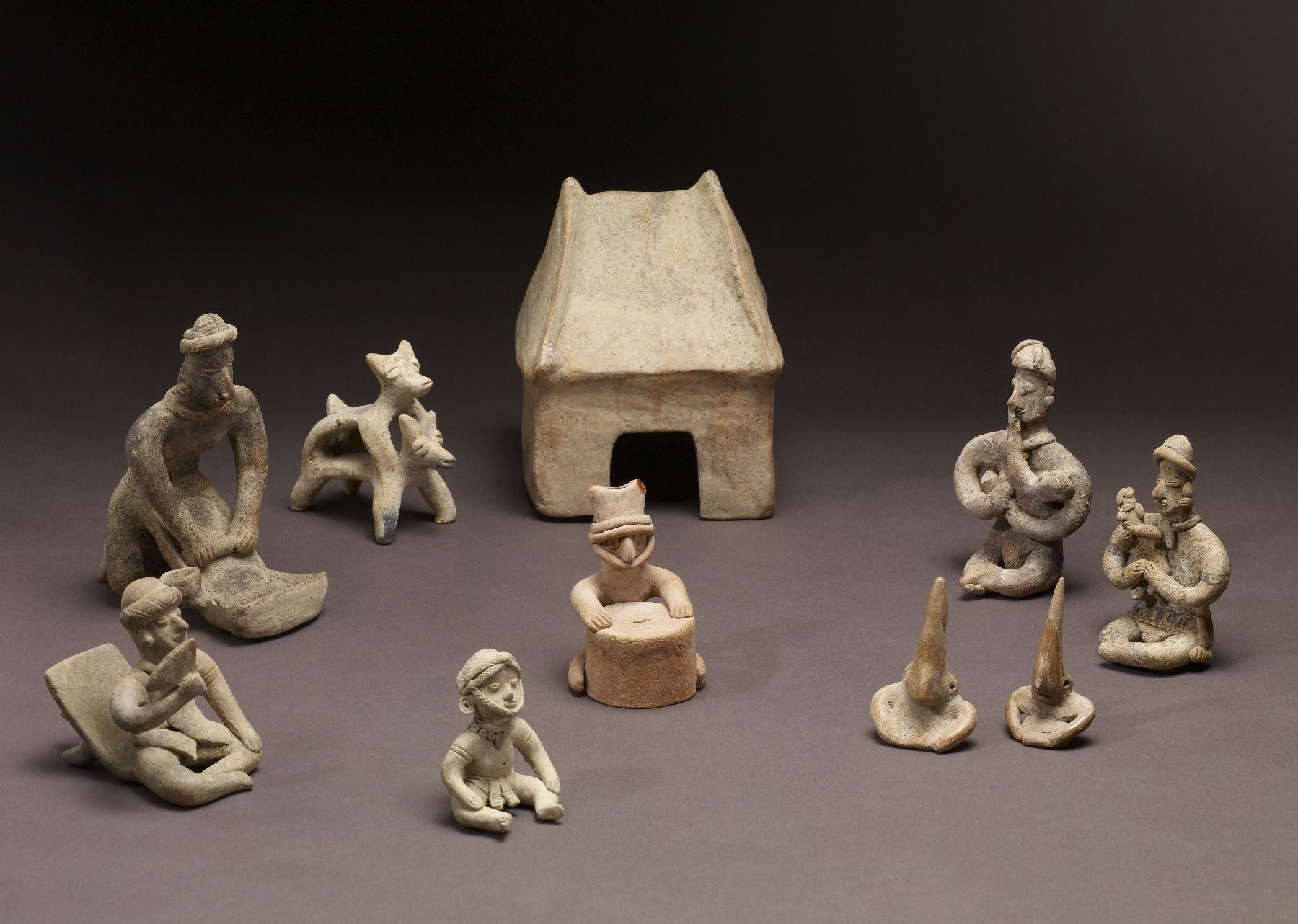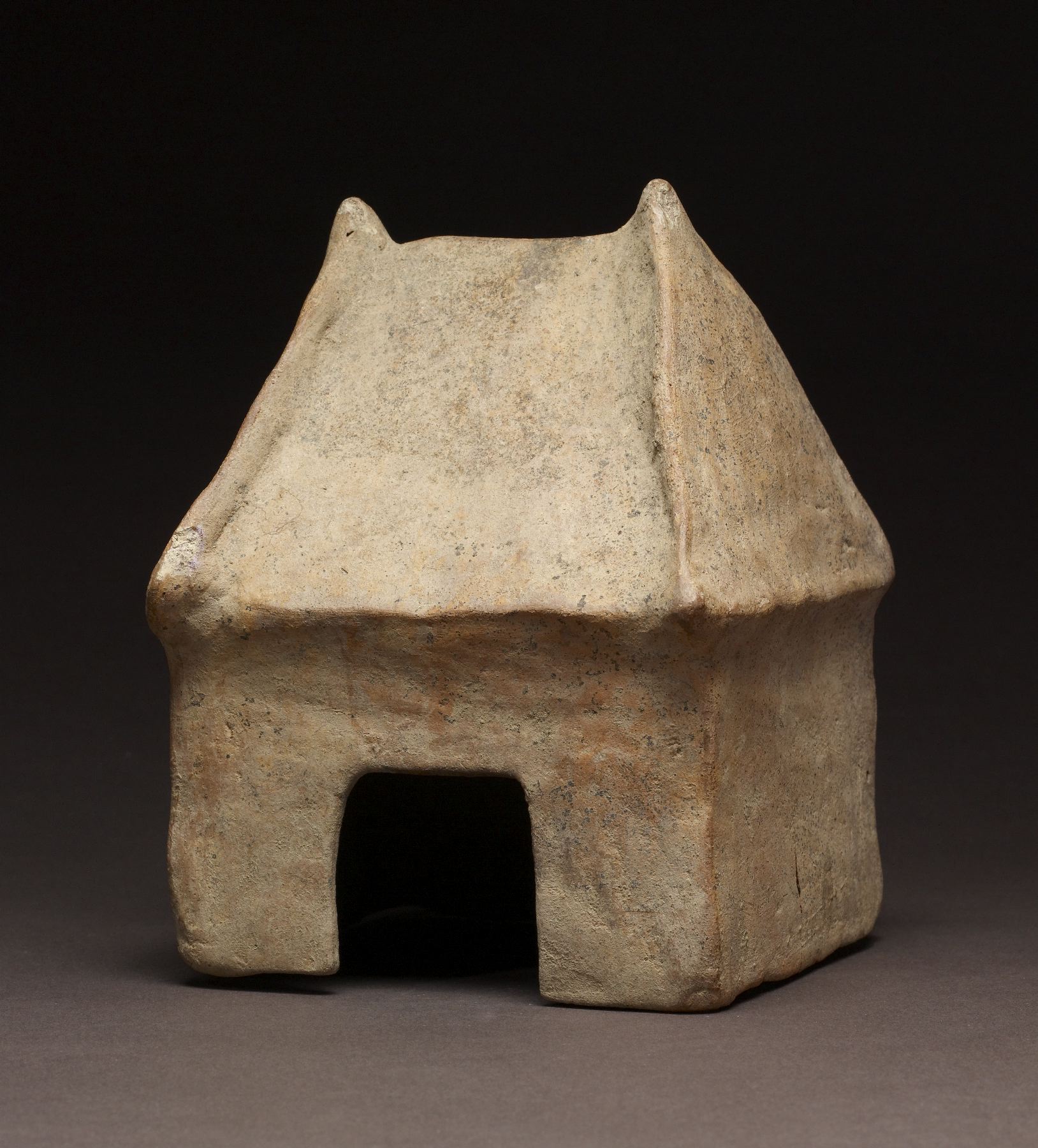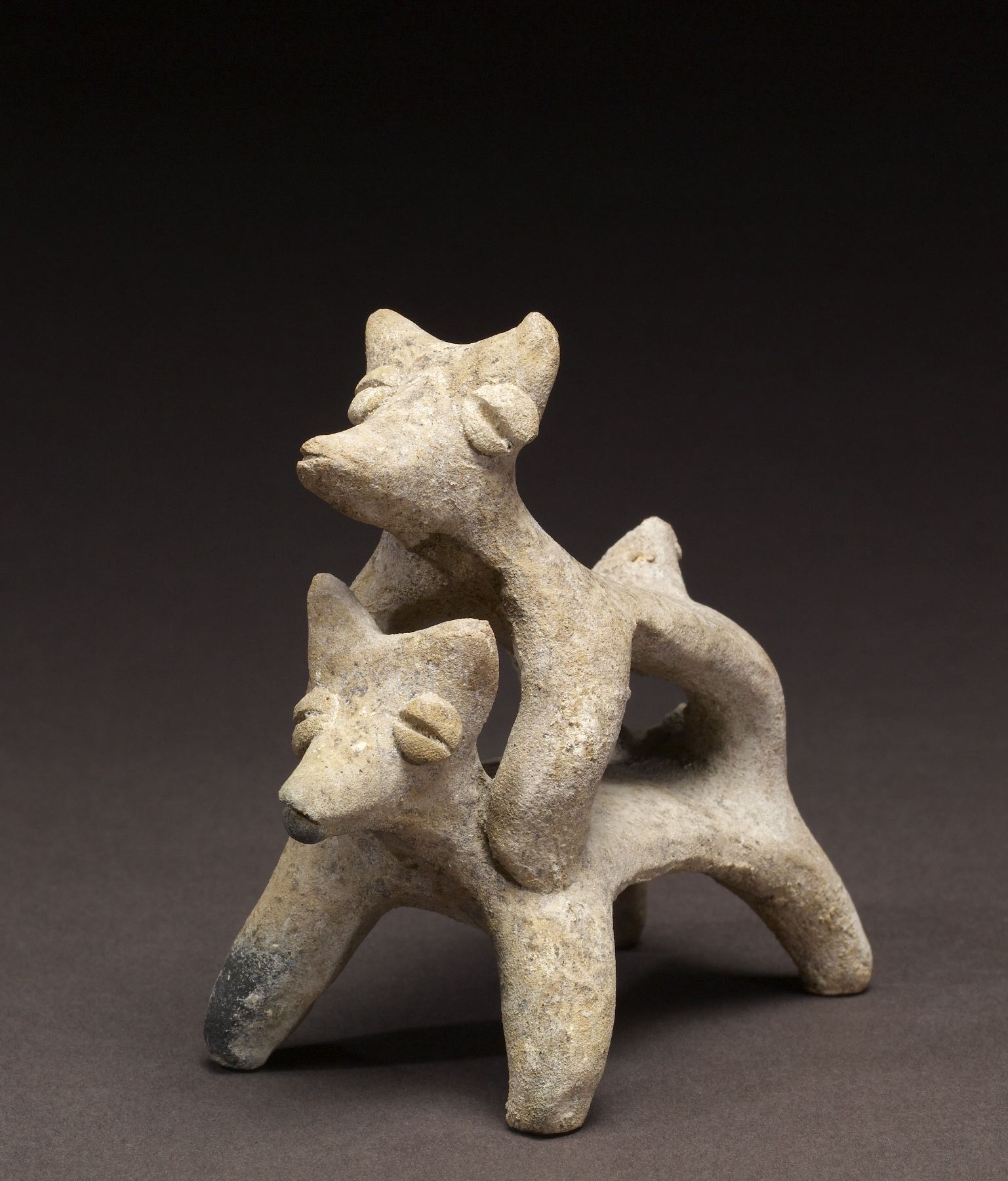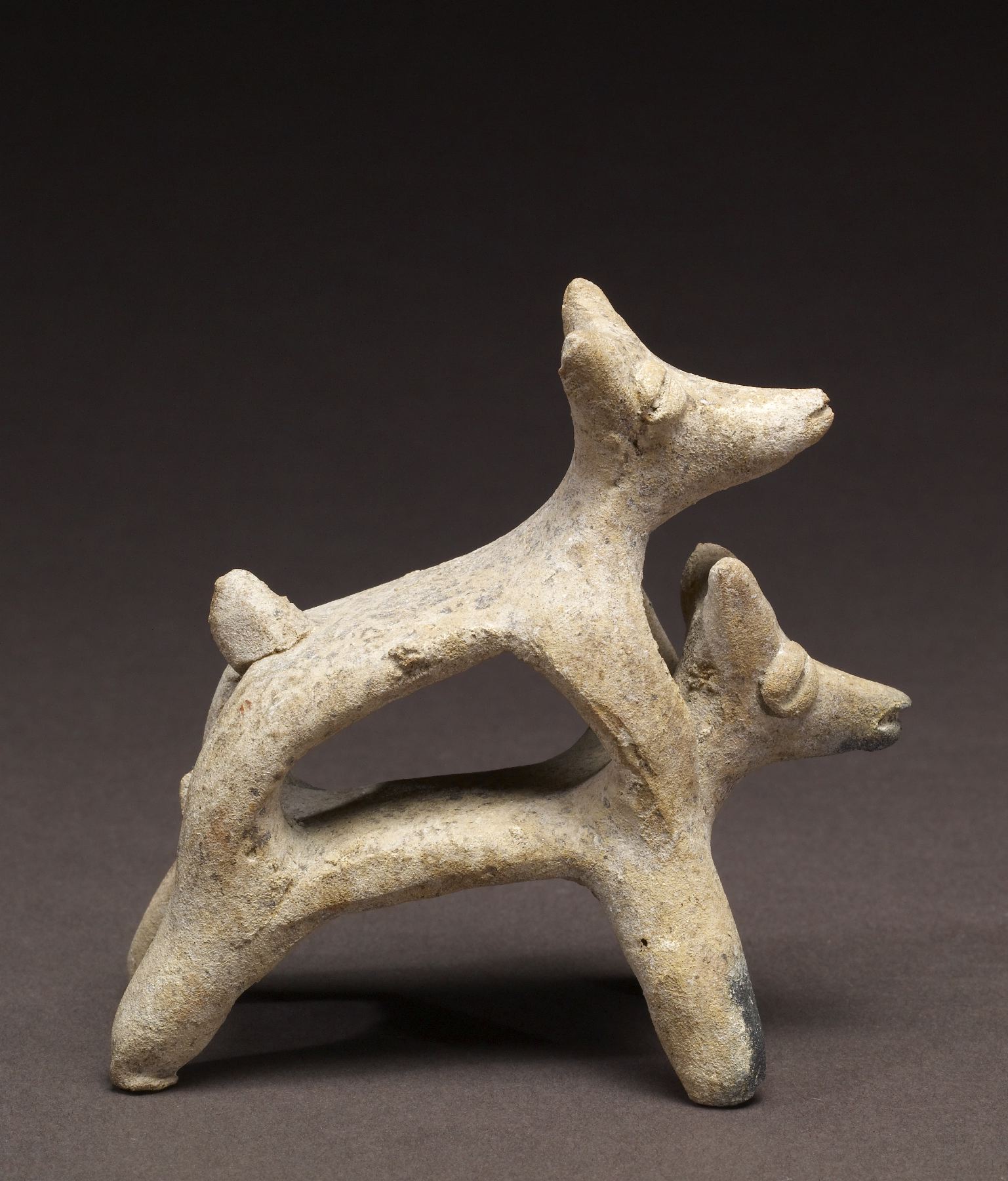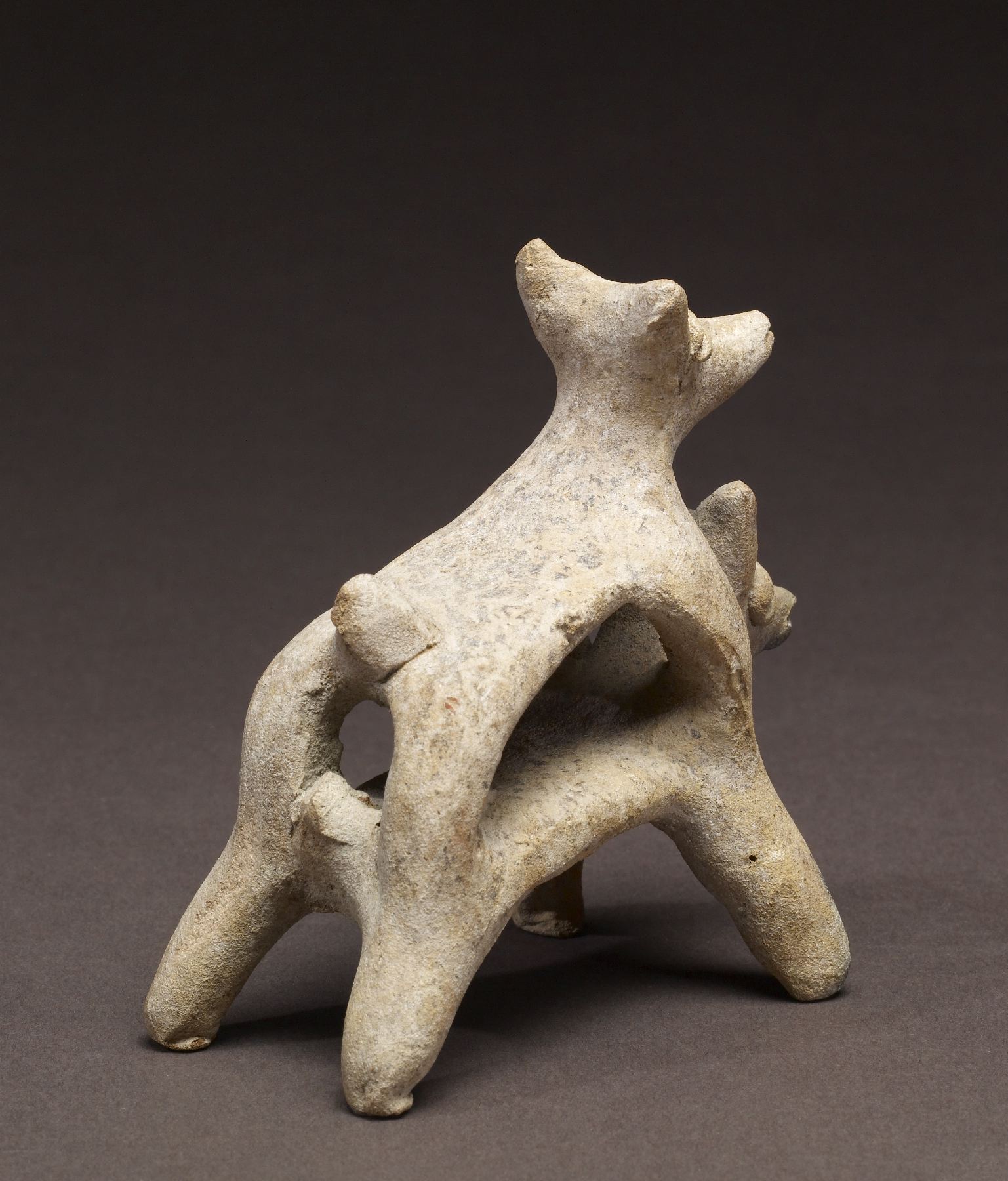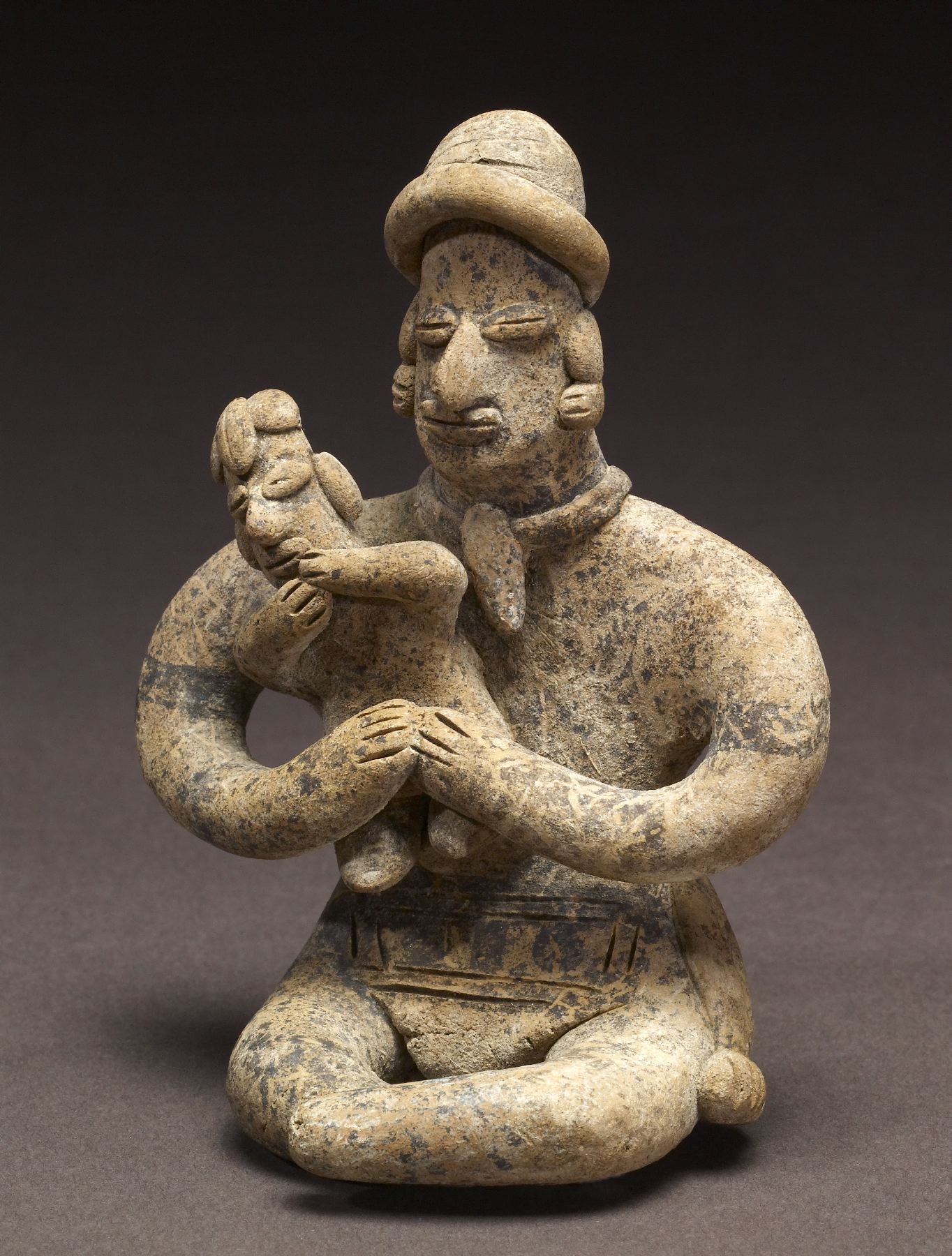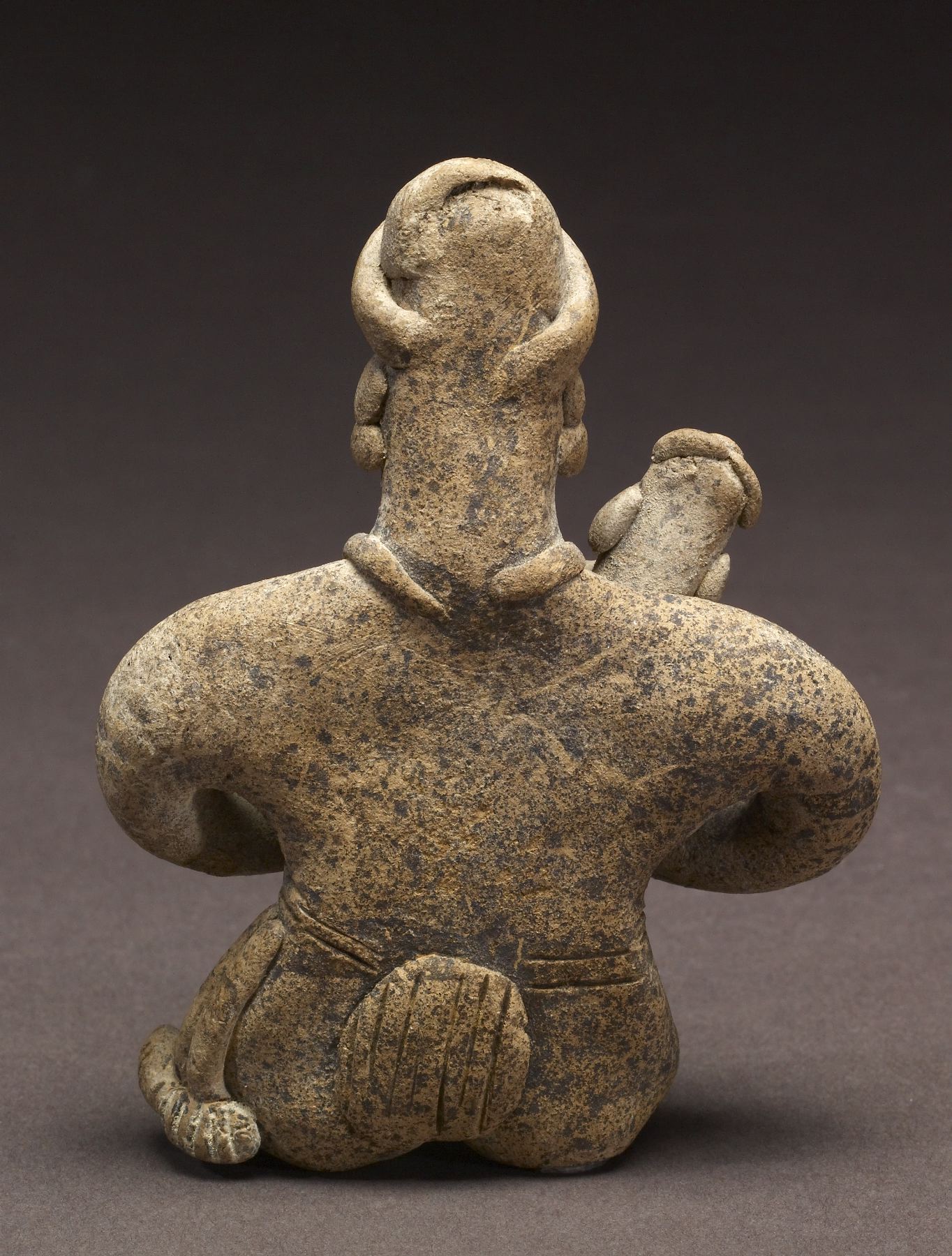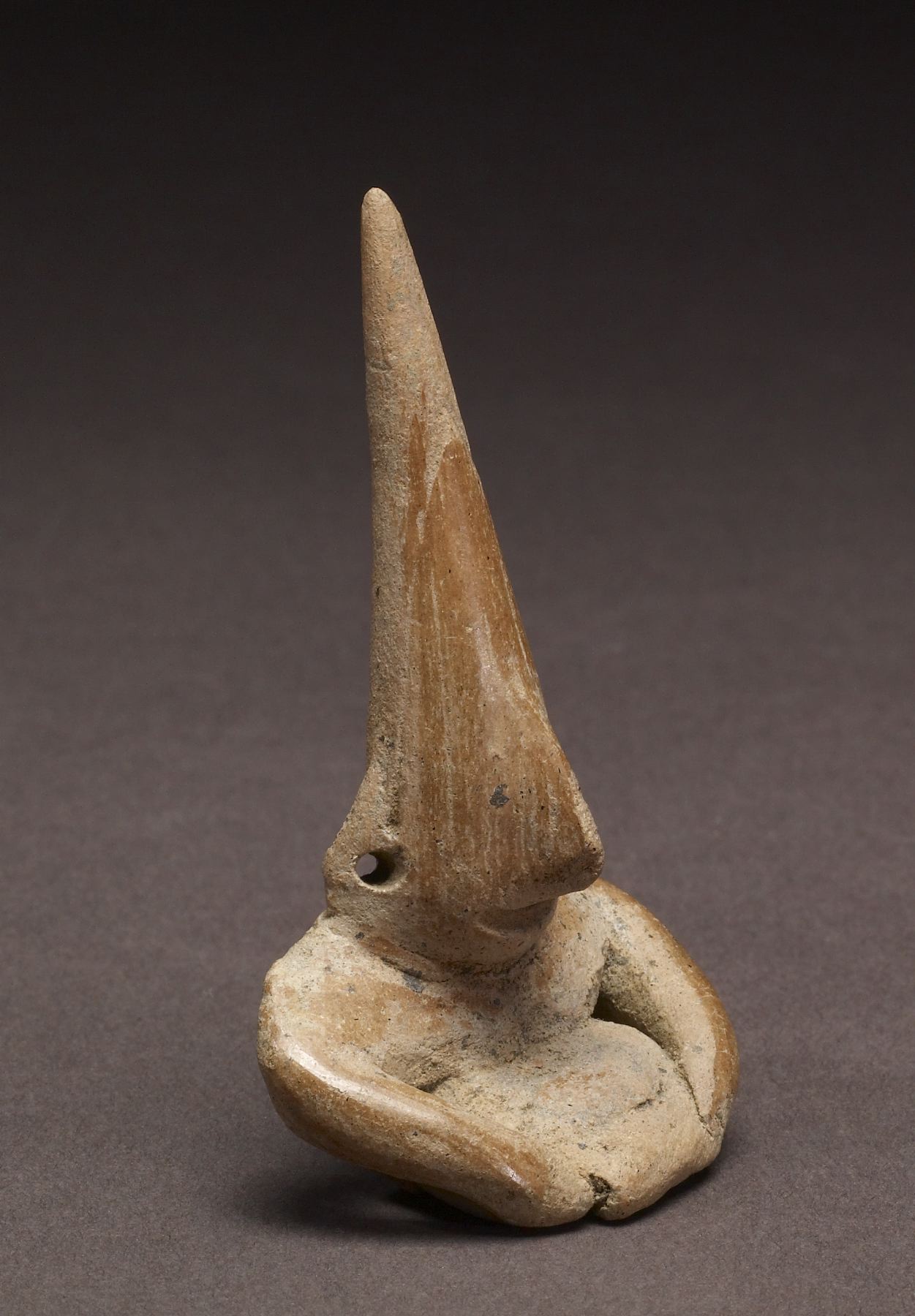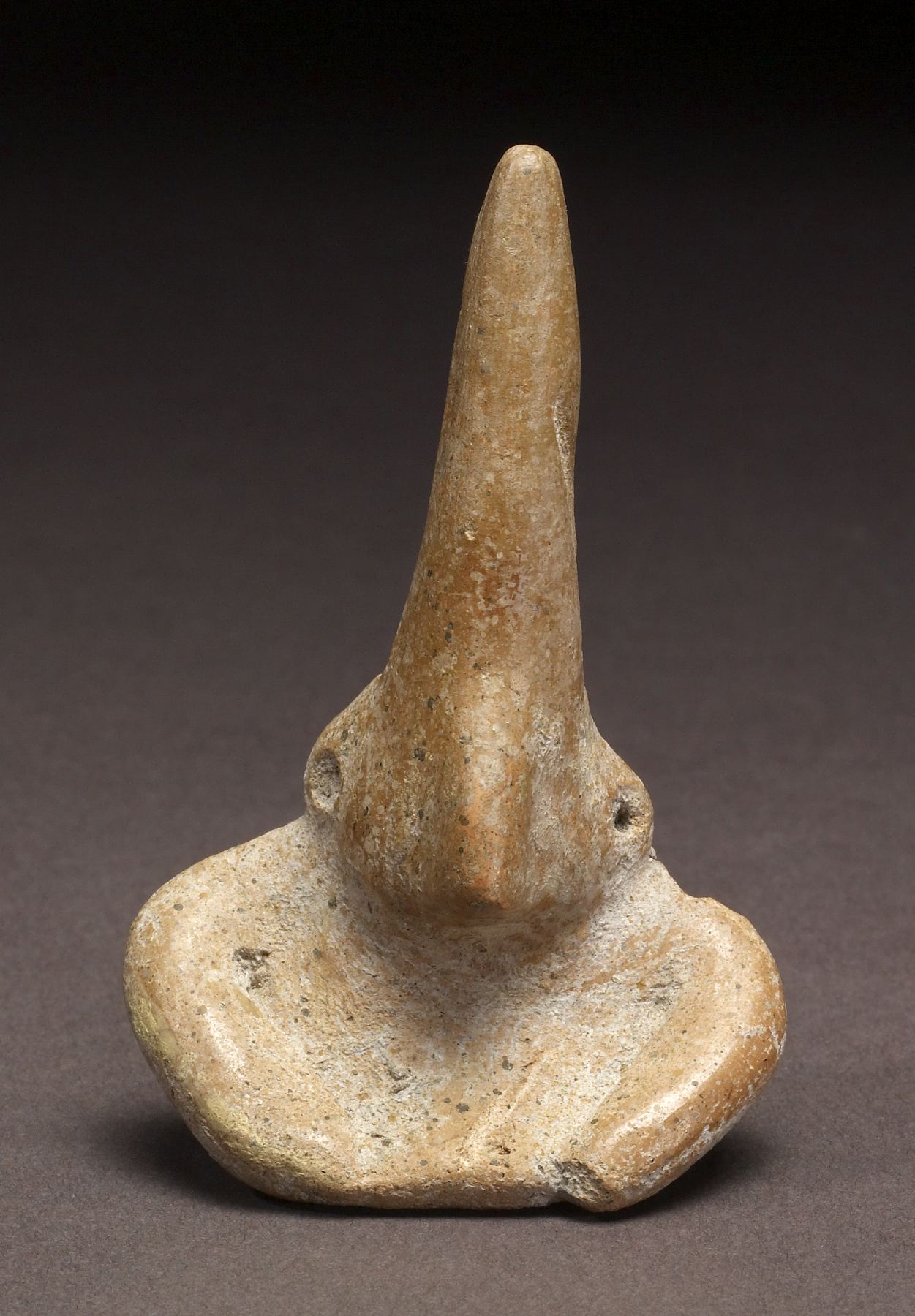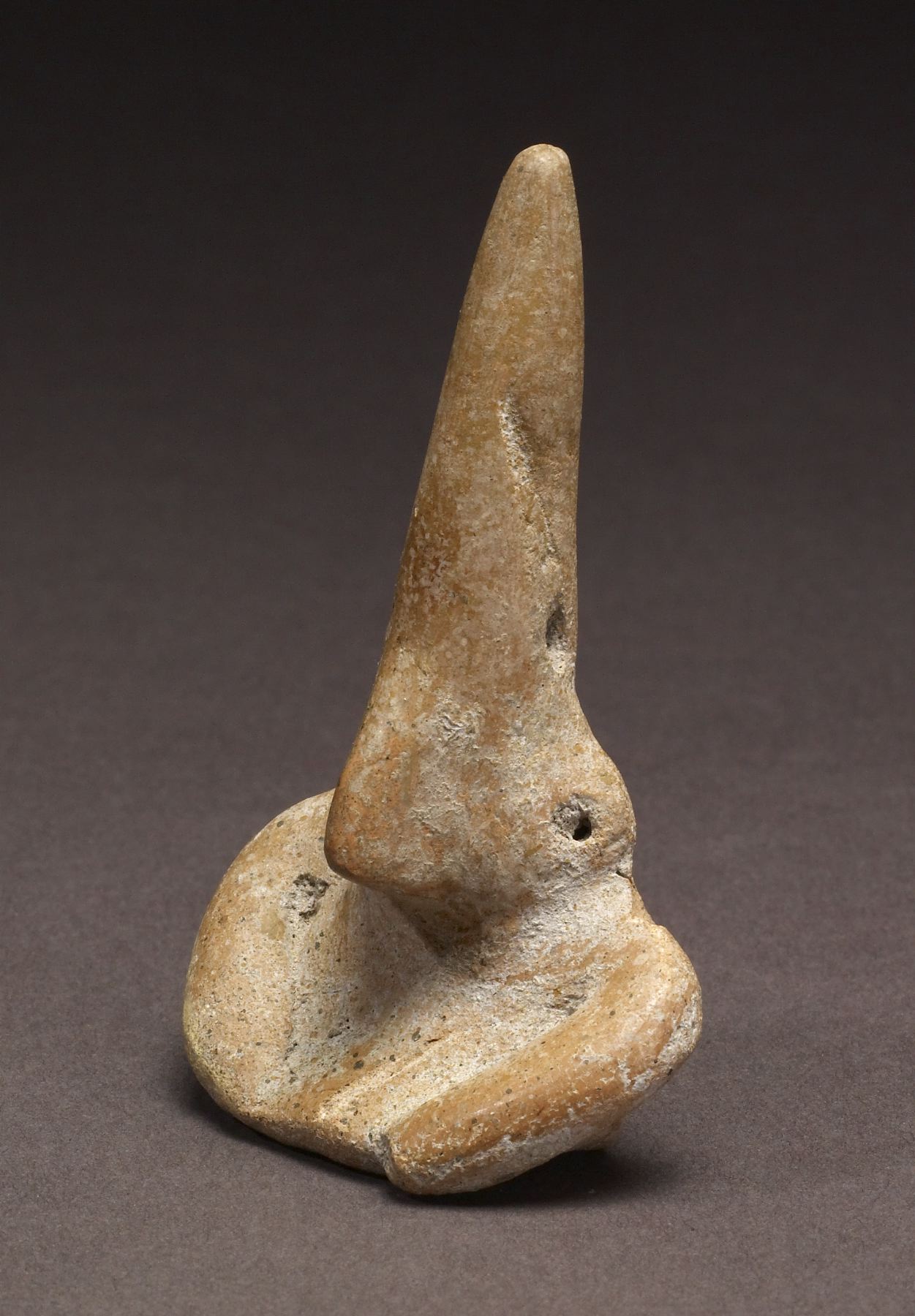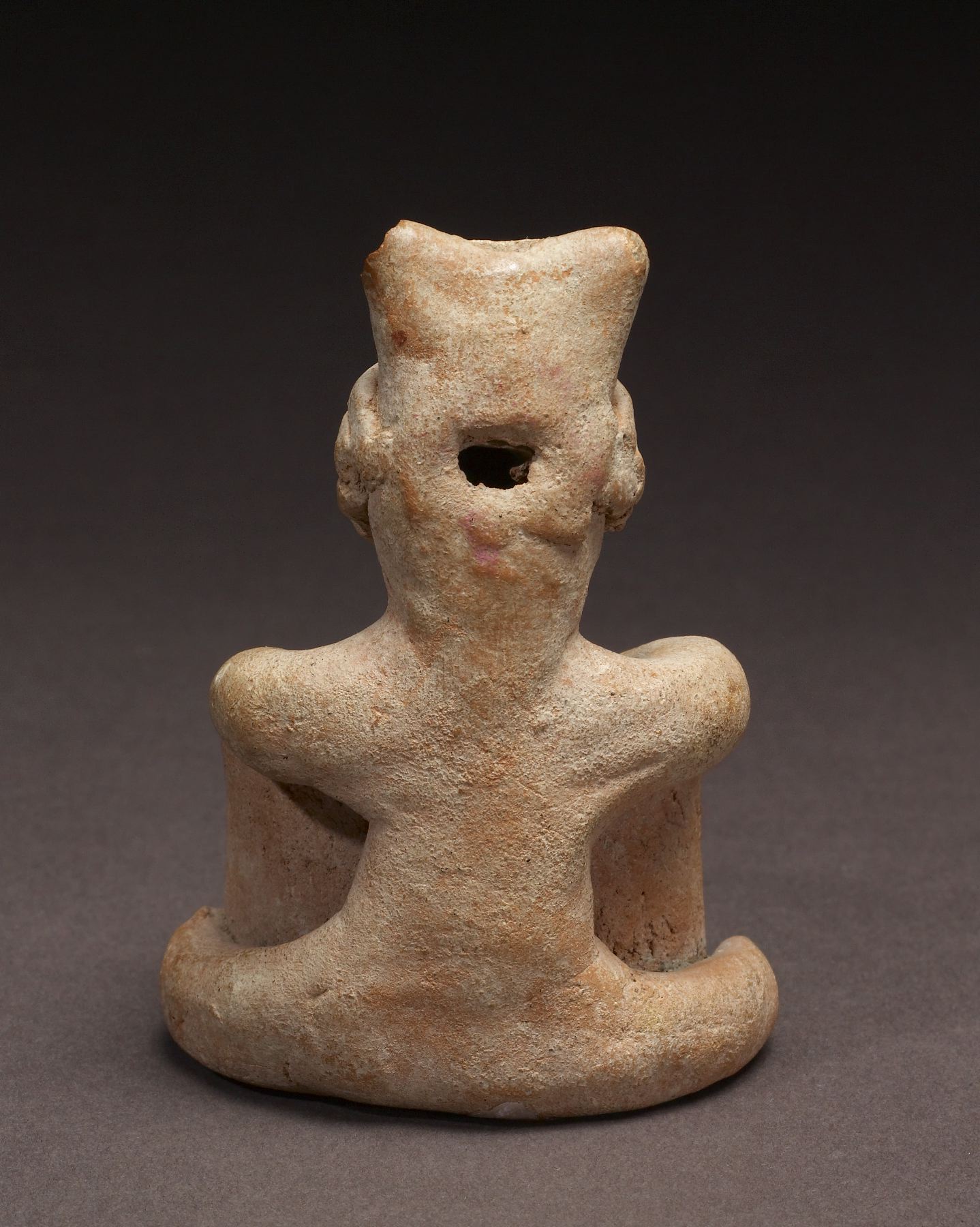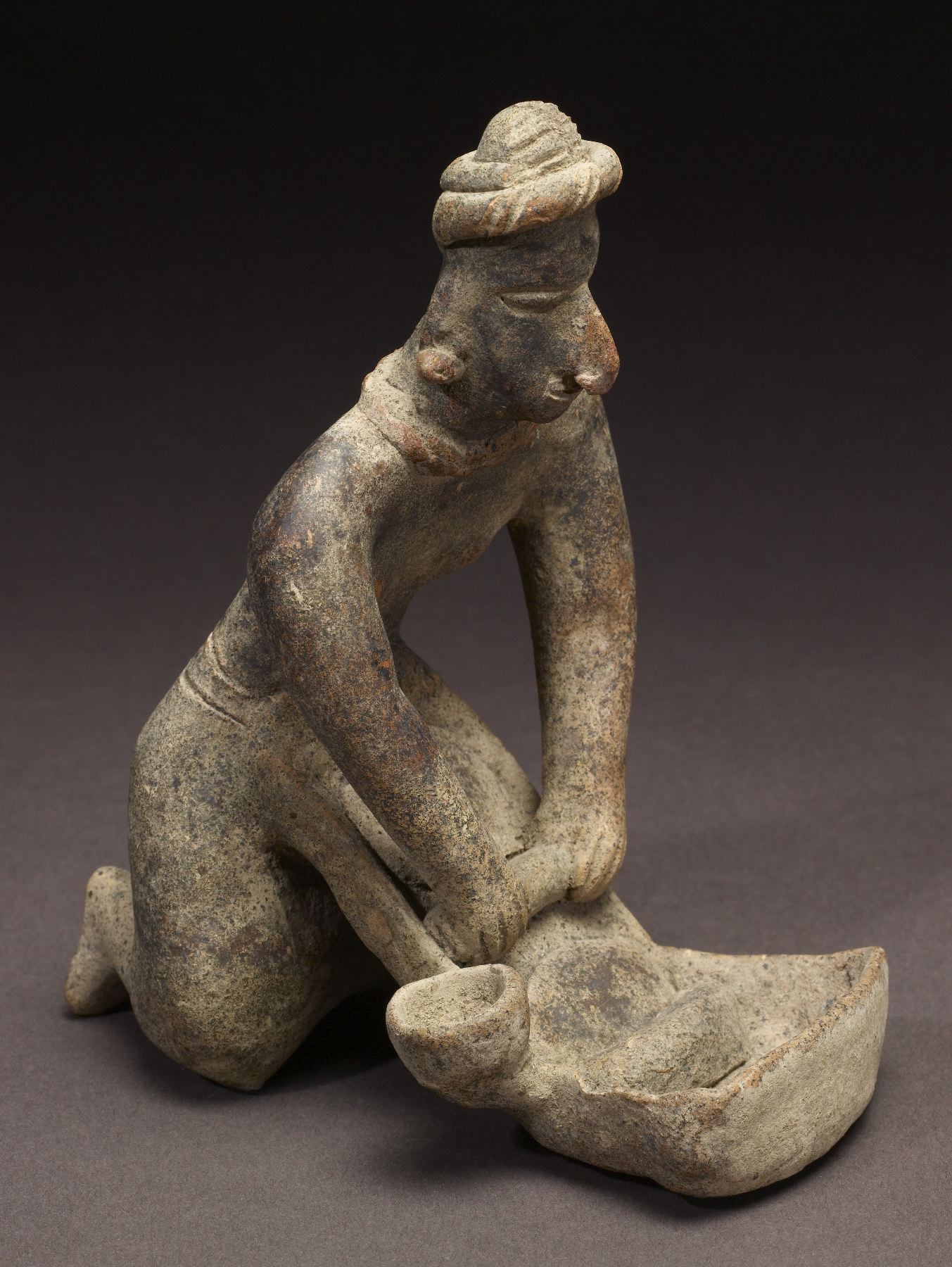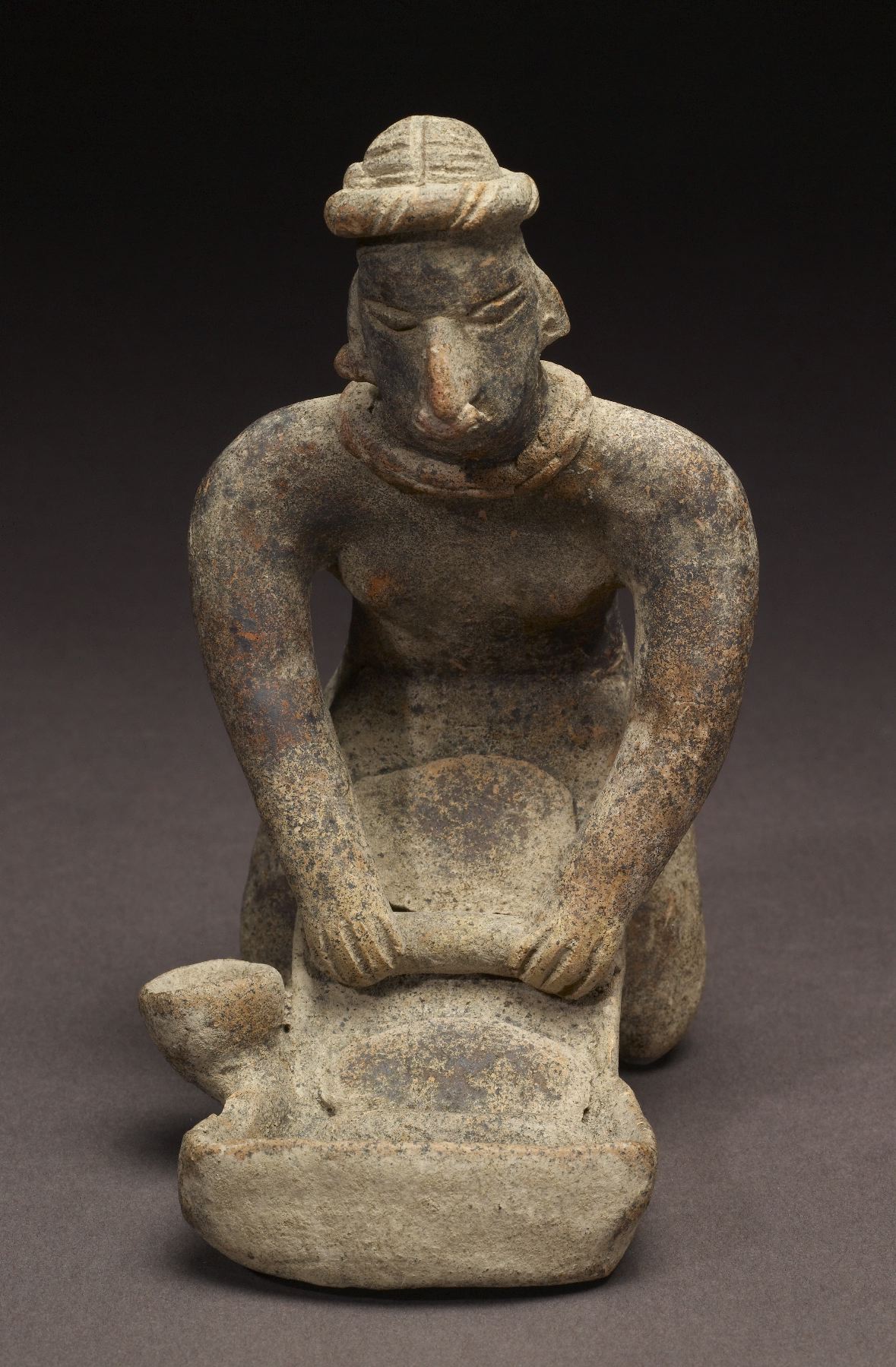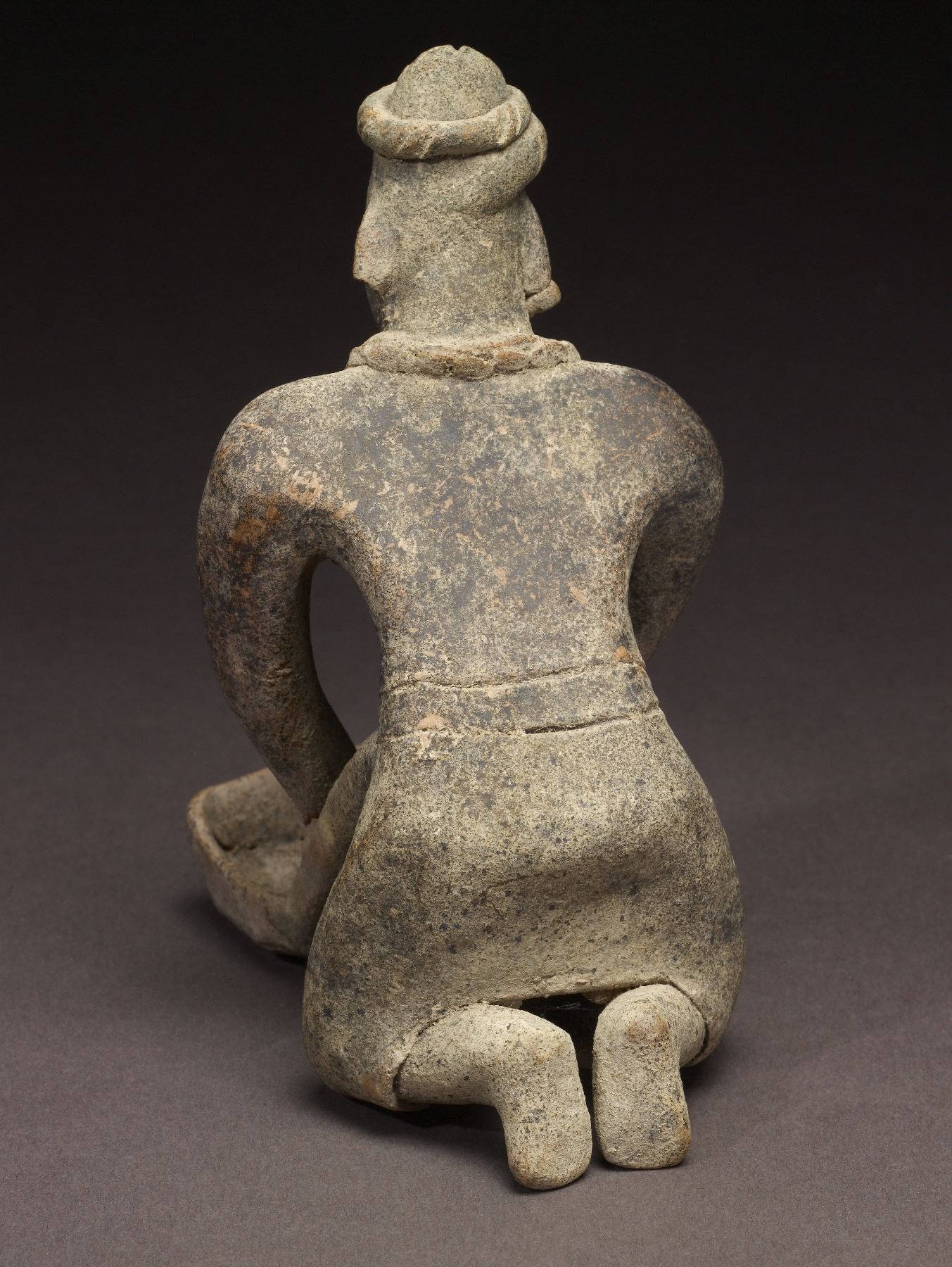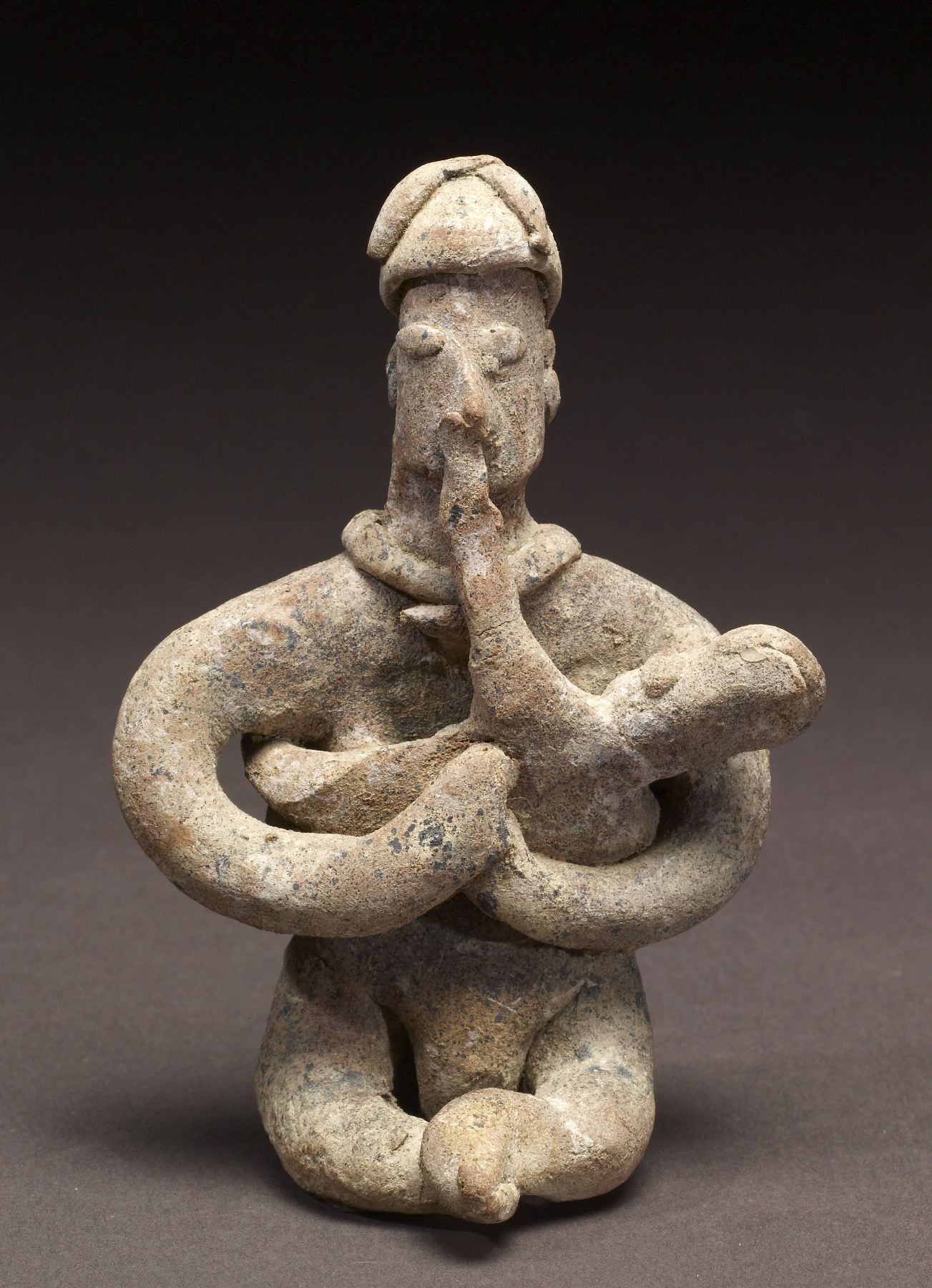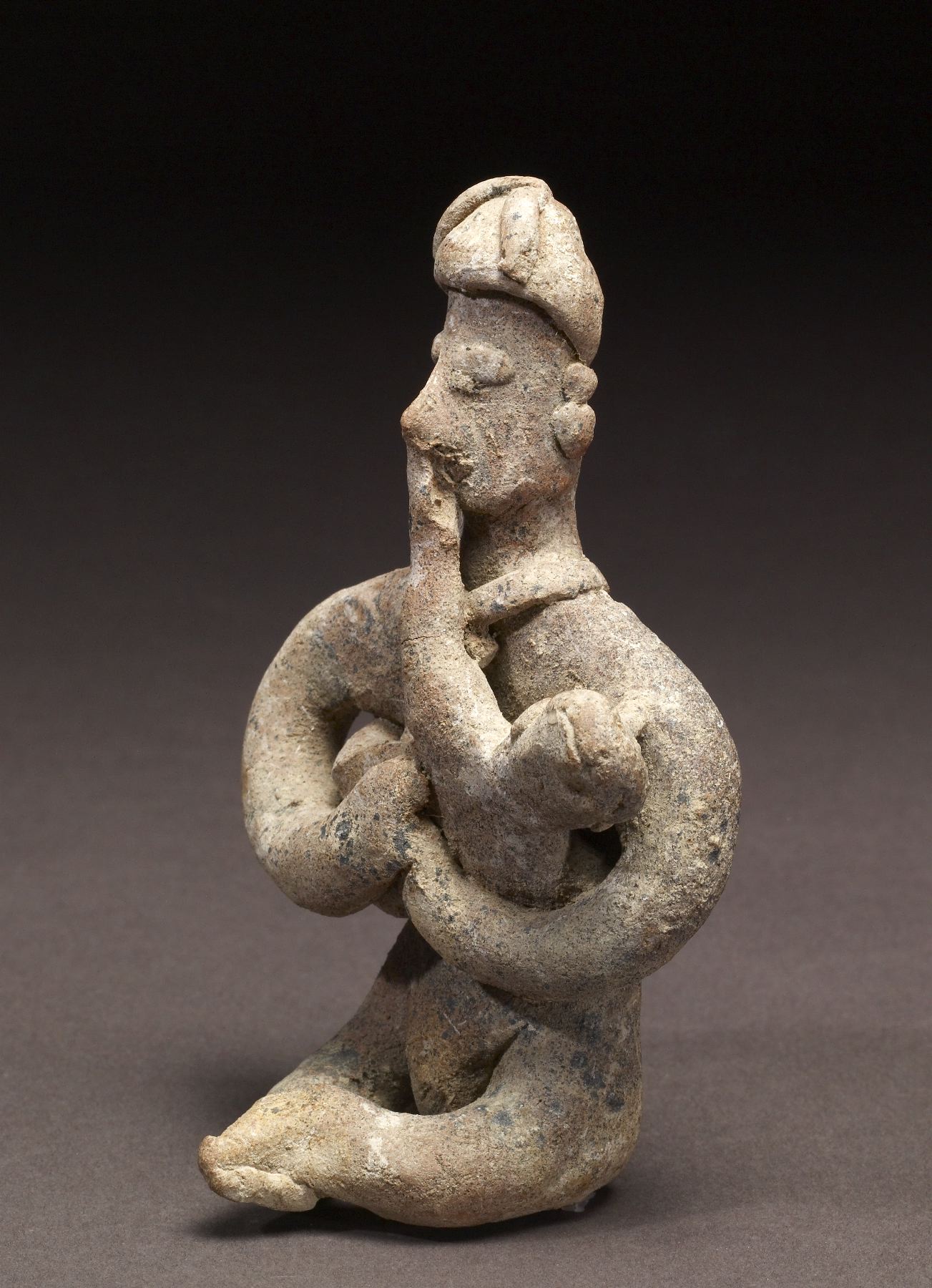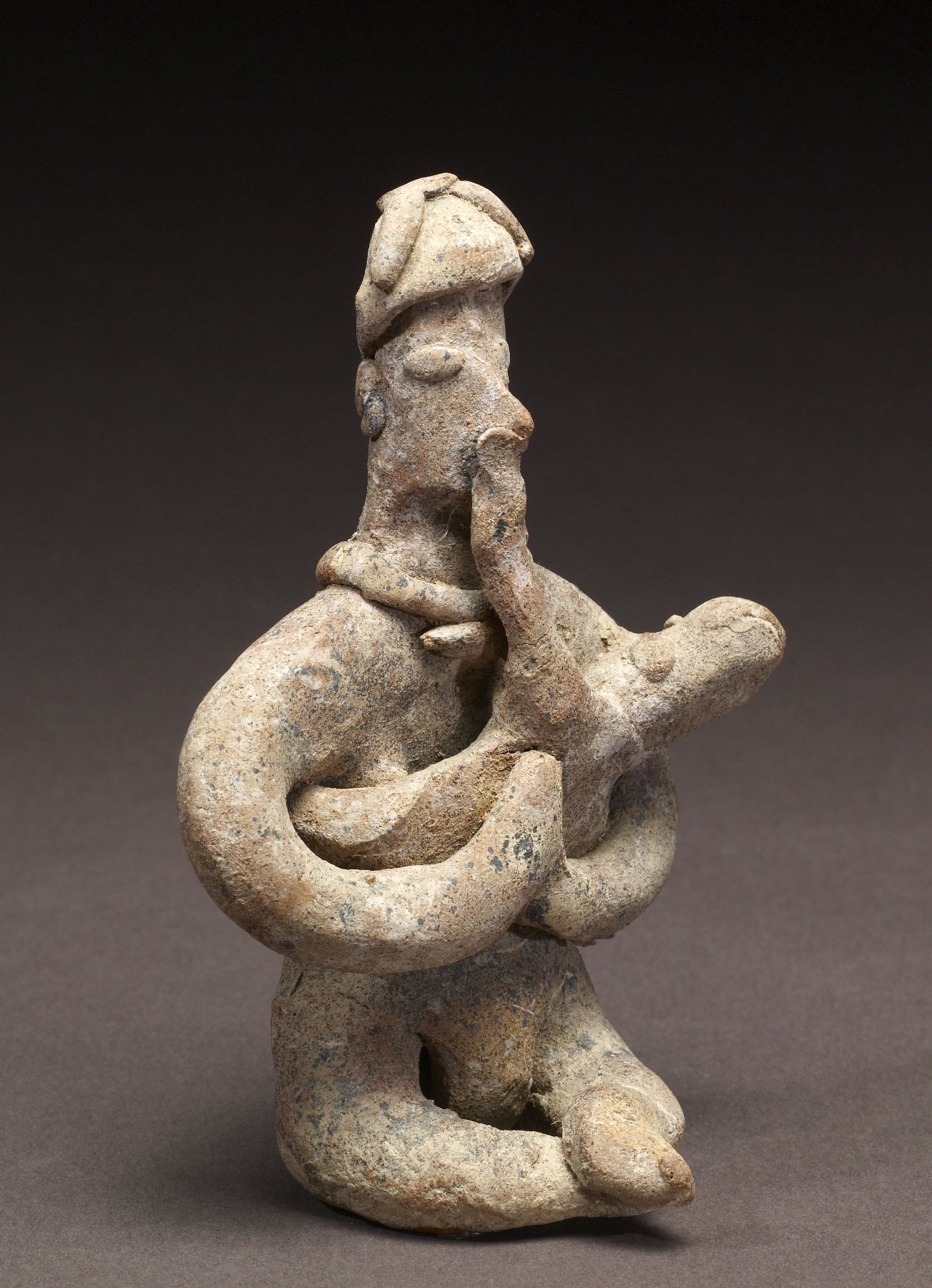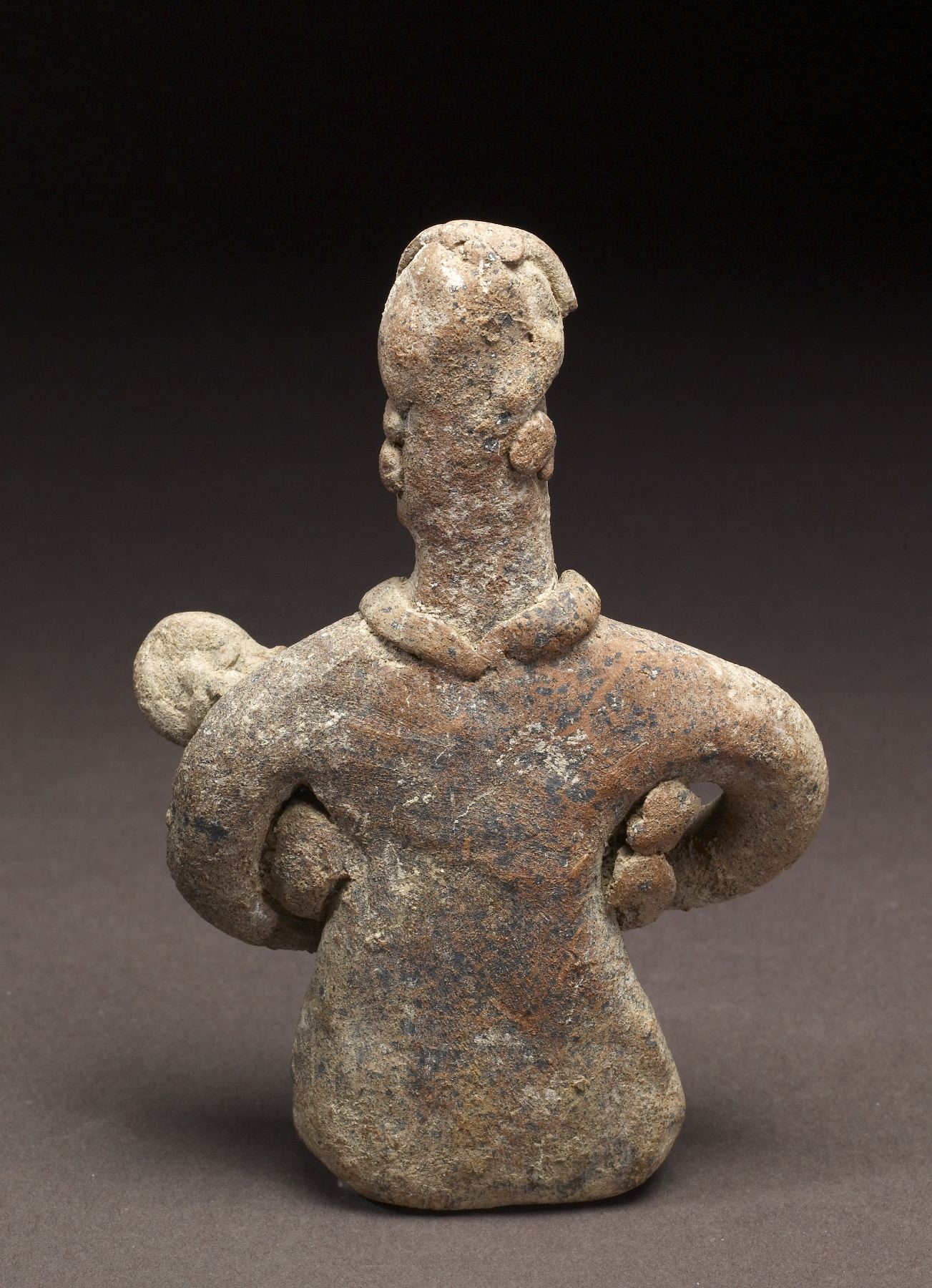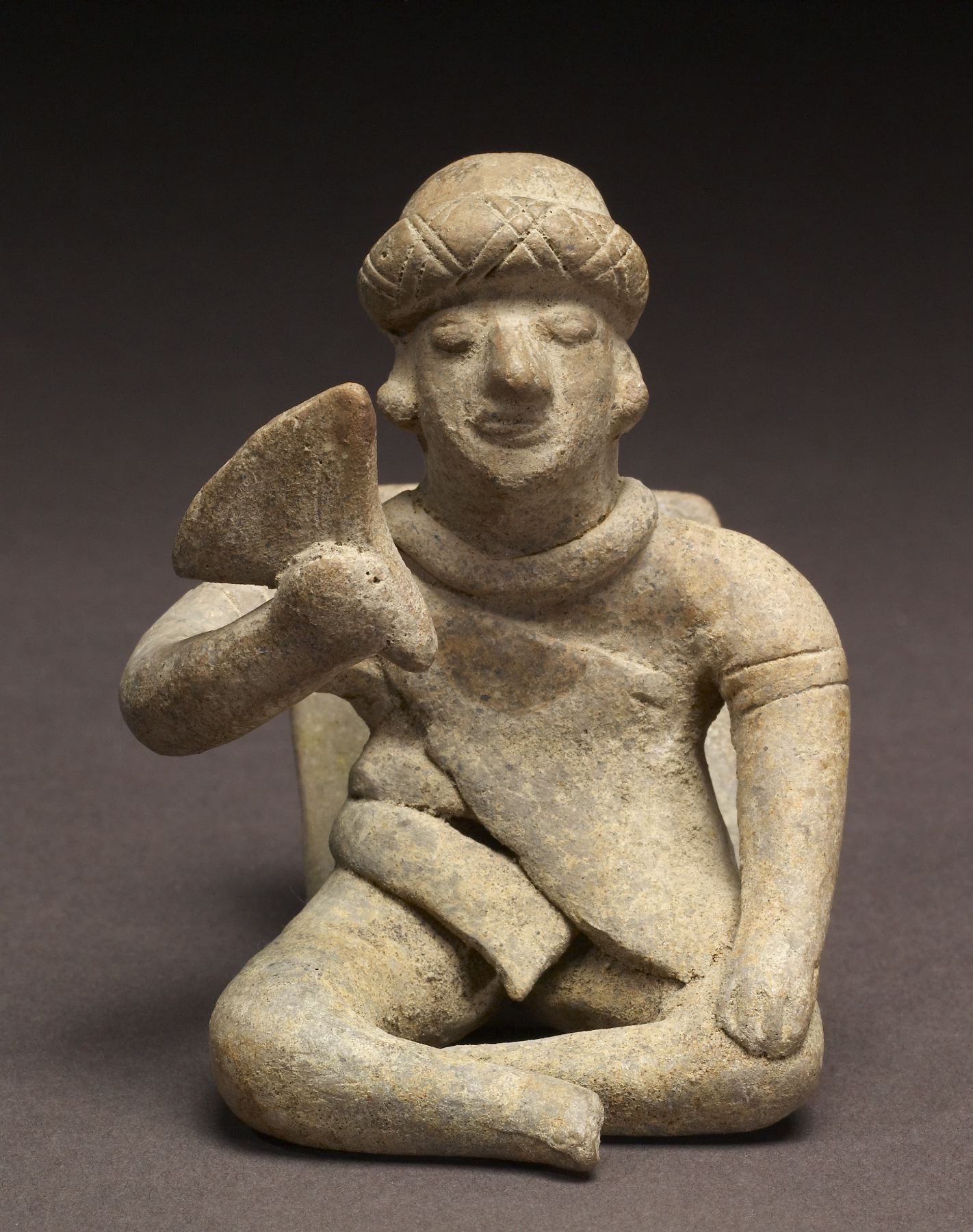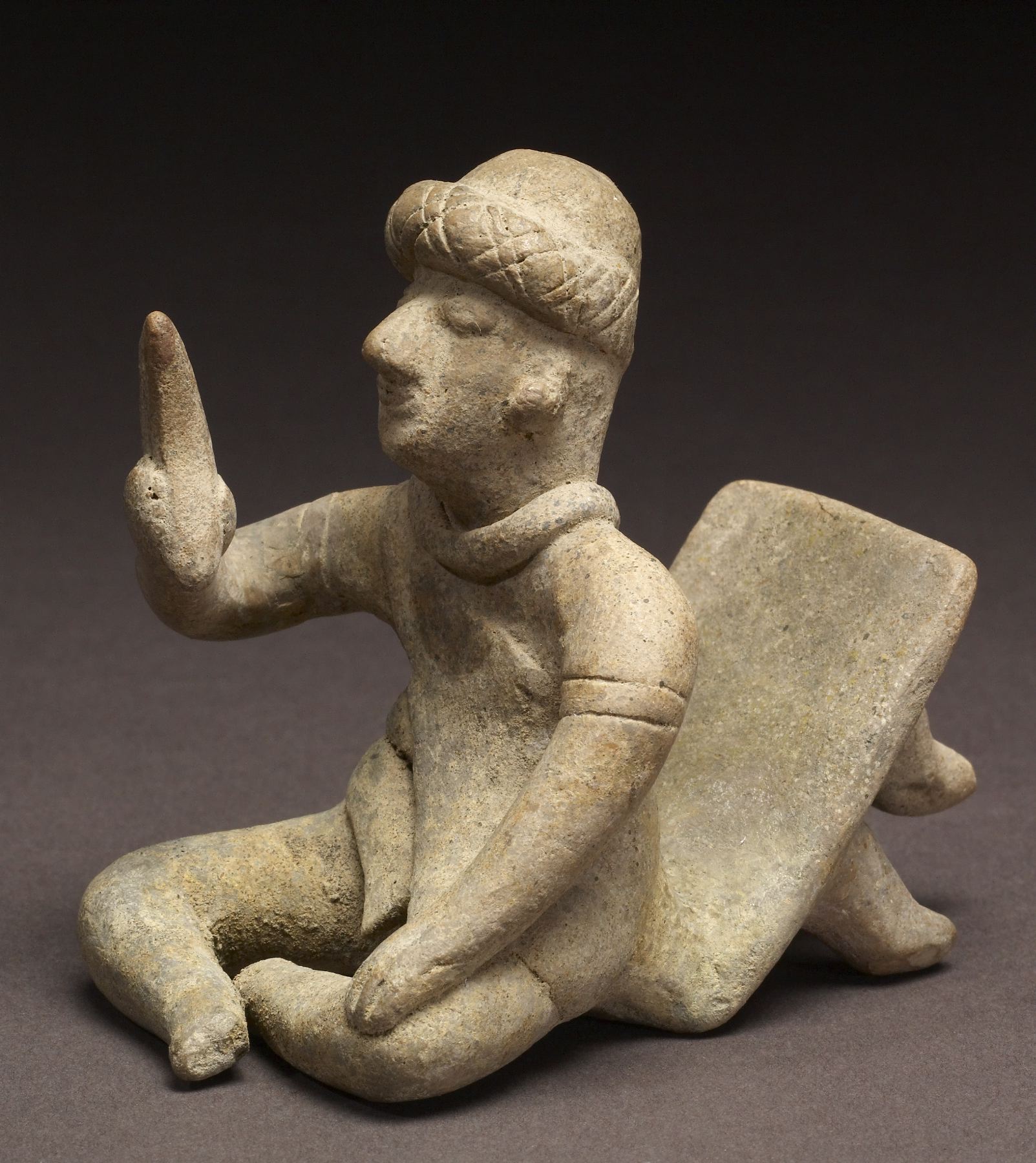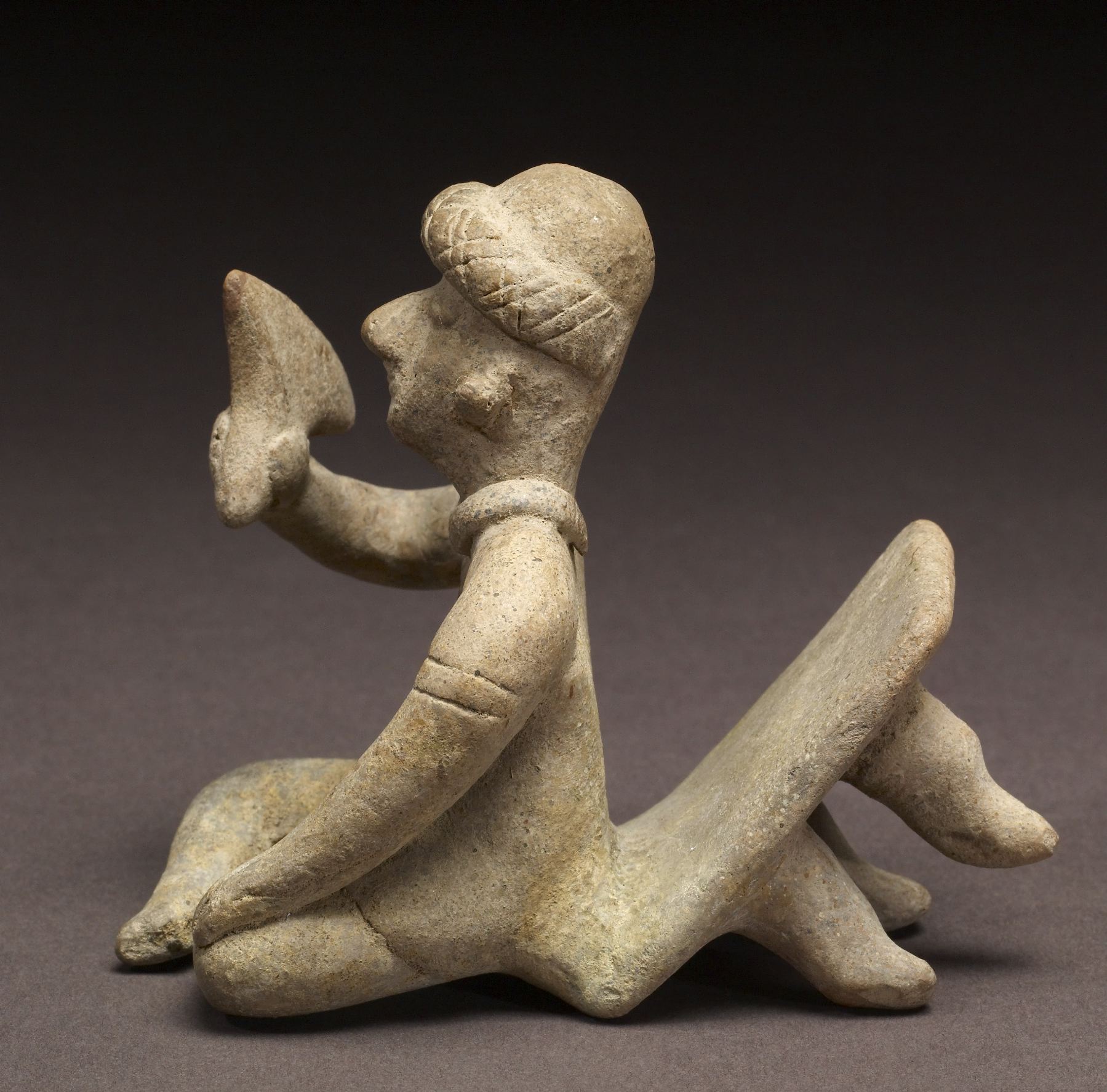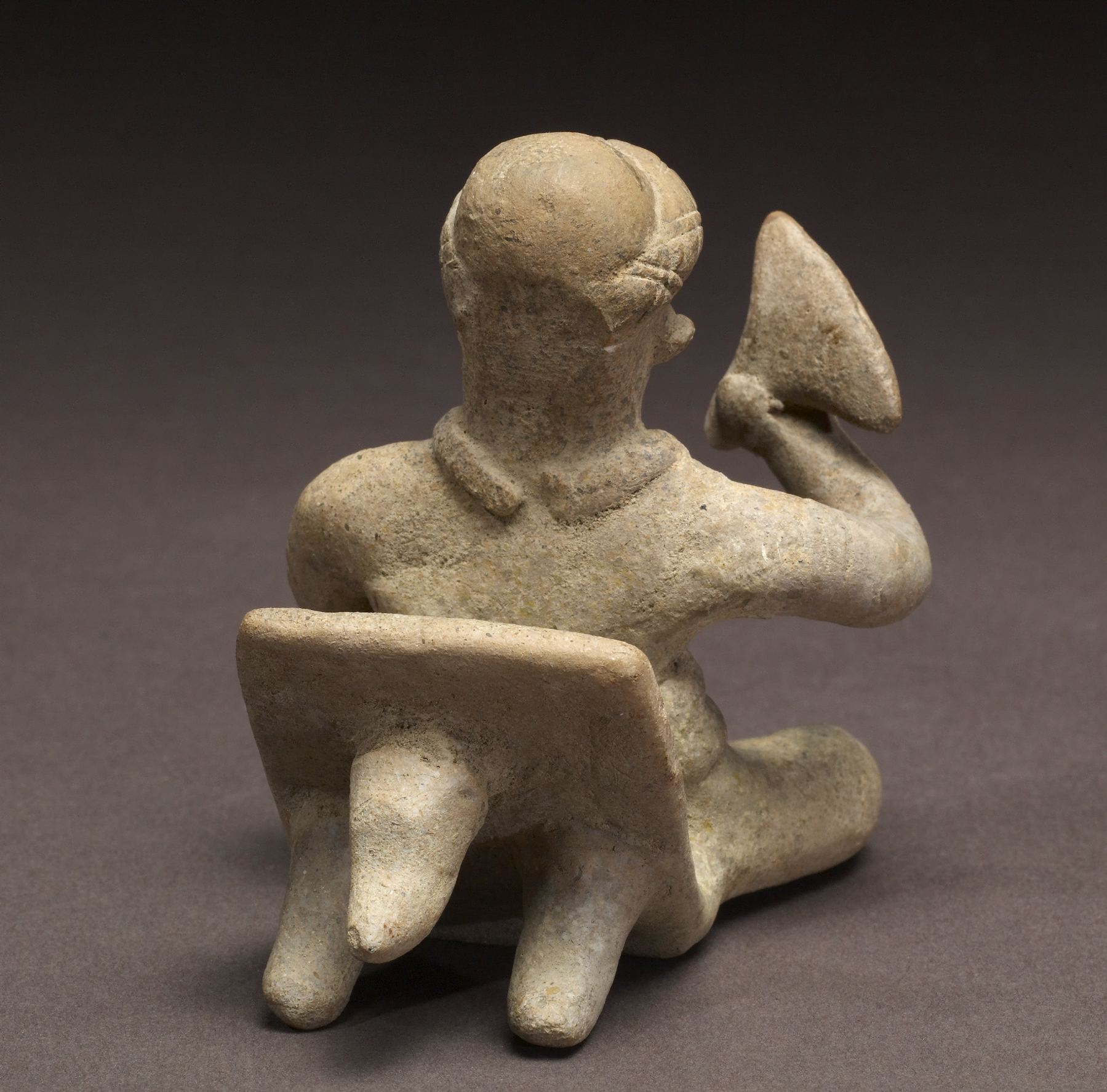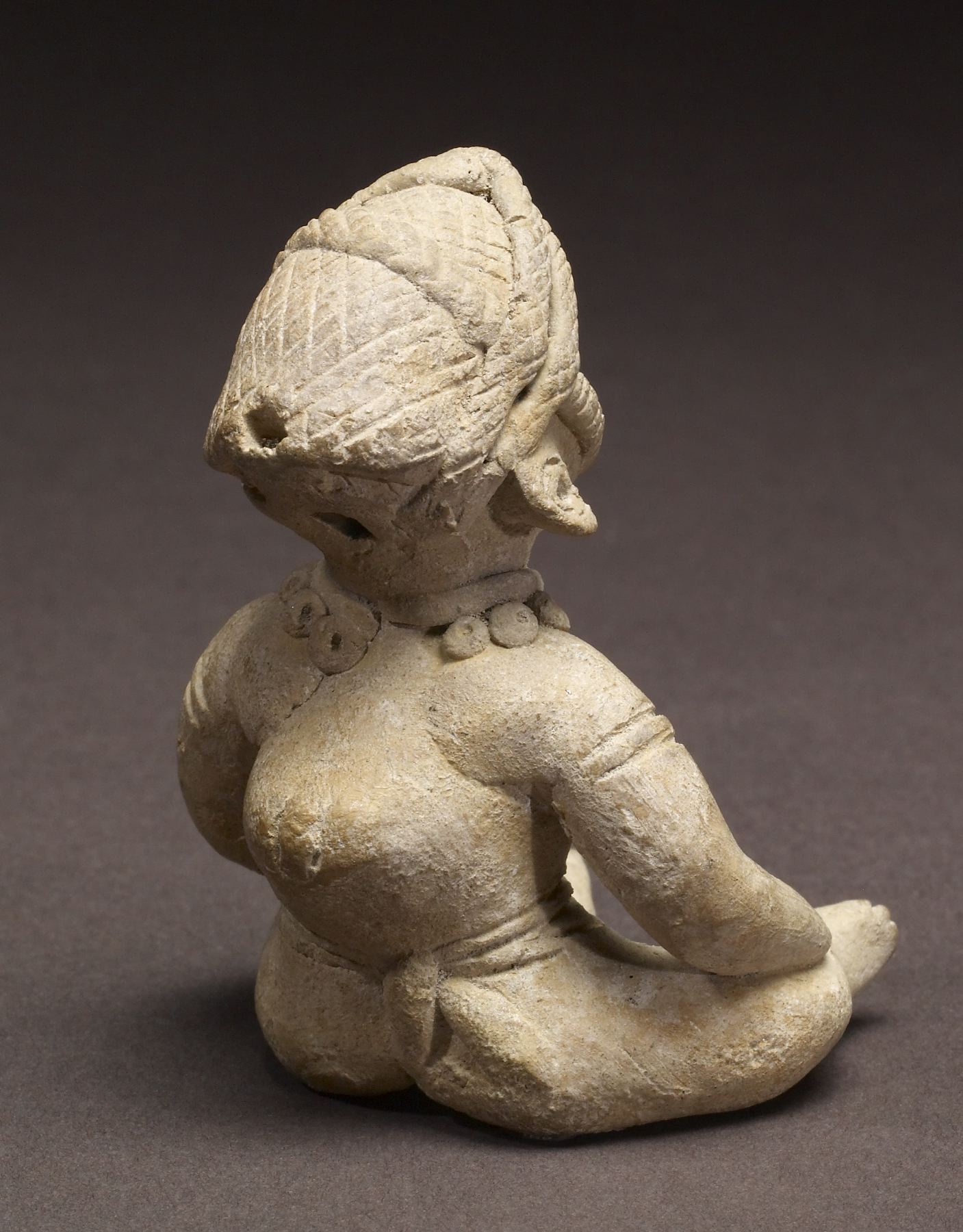Group of Figurines and Architectural Model
(Ancient Americas )
Narrative groupings of figurines in architectural settings have been found throughout Mesoamerica in contexts dating as early as the Middle Formative Period (900-400 BCE). Some are made from jadeite and similar precious stones, such as an Olmec ceremonial scene of sixteen figurines arranged in a semicircle and framed by six column-like celts. Others are composed of modeled ceramic figures depicting a burial or ancestor veneration rite complete with elaborately dressed performers and musicians, like that found above Tomb 103 at Monte Albán, Oaxaca. The objects that constitute these figure groups generally share the same aesthetic style and manufacturing technique, which suggests they were made at the same time as a single artistic statement. The disparate artistic styles and technical features suggest that these nine Colima figurines and one building model might be a modern grouping, although dissimilar figurines have been documented in figure groupings found in the same tomb. In this instance archaeological confirmation is not available. The figurine types represent at least two styles from Colima-Jalisco, including the Tuxcacuesco-Ortices type (nos. 33.3, 33.8, and 33.9) and two from the Colima-Jalisco border region (nos. 33.4 and 33.5). The house model (no. 33.1) depicts a typical West Mexican domicile or ceremonial building without its basal, earthen platform. No architecture of comparable form is found in the region because these structures were made of perishable materials; only the earth-and-stone platforms have survived, although many have been destroyed by modern agricultural activities. These architectural models thus document the lost architectural heritage of ancient West Mexico. The figures portray men and women performing both ritual and daily activities, from mothers tending children (nos. 33.3 and 33.8) and grinding maize (no. 33.7) to men drumming (no. 33.6) or sitting regally and brandishing a fanlike scepter (no. 33.9). A seated hunchback figure, which also is a whistle, sports an elaborate head wrap and fine jewelry (no. 33.10). A dog-standing-atop-a-dog sculpture and two seated men with elongated heads complete the group (nos. 33.2, 33.4, and 33.5). This elongated-head figurine style is associated with the northern Colima-Jalisco region and dates to the later years of the Comala phase (ca. 200-300 CE).
Provenance
Provenance (from the French provenir, 'to come from/forth') is the chronology of the ownership, custody, or location of a historical object. Learn more about provenance at the Walters.
John G. Bourne [date and mode of acquisition unknown]; Walters Art Museum, 2009, by gift.
Exhibitions
| 2012-2013 | Exploring Art of the Ancient Americas: The John Bourne Collection Gift. The Walters Art Museum, Baltimore; Frist Center for the Visual Arts, Nashville. |
| 1998-2008 | Art of Ancient America, 1500 B.C.-1400 A.D.. Museum of New Mexico, Santa Fe. |
Geographies
Mexico, Colima (Place of Origin)
Measurements
.1 H: 6 5/8 x W: 5 3/16 x D: 5 3/8 in. (16.9 x 13.1 x 13.7 cm);
.2 H: 3 3/4 x L: 3 13/16 x W: 2 1/16 in. (9.5 x 9.7 x 5.3 cm);
.3 H: 4 1/16 x W: 3 1/16 x D: 1 7/8 in. (10.3 x 7.7 x 4.8 cm);
.4 H: 2 13/16 x W: 1 5/8 x D: 7/8 in. (7.1 x 4.1 x 2.3 cm);
.5 H: 2 7/8 x W: 1 7/8 x D: 7/8 in. (7.3 x 4.7 x 2.3 cm);
.6 H: 3 9/16 x W: 2 7/16 x D: 2 1/2 in. (9.1 x 6.2 x 6.3 cm);
.7 H: 5 3/4 x W: 3 1/16 x D: 5 in. (14.6 x 7.8 x 12.7 cm);
.8 H: 4 3/4 x W: 3 5/16 x D: 2 3/16 in. (12.1 x 8.4 x 5.5 cm);
.9 H: 3 1/2 x W: 2 11/16 x D: 4 in. (8.9 x 6.9 x 10.1 cm);
.10 H: 2 3/4 x W: 2 x D: 2 1/16 in. (7 x 5.1 x 5.2 cm)
Credit Line
Gift of John Bourne, 2009
Location in Museum
Not on view
Accession Number
In libraries, galleries, museums, and archives, an accession number is a unique identifier assigned to each object in the collection.
In libraries, galleries, museums, and archives, an accession number is a unique identifier assigned to each object in the collection.
2009.20.33

